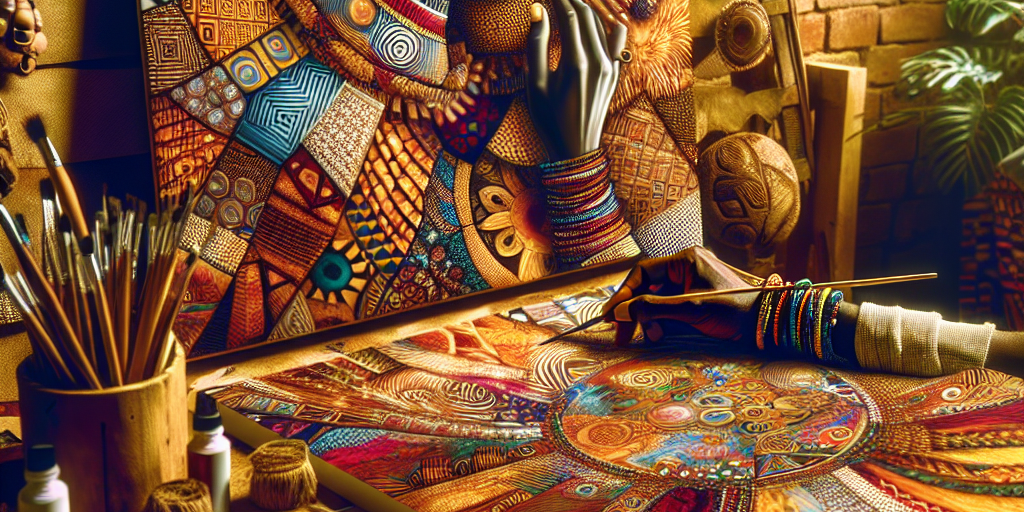Revitalizing Tradition: How African Cultures Are Shaping Modern Art
In the ever-evolving landscape of modern art, where innovation often meets inspiration from the past, African cultures have emerged as a significant force, redefining contemporary aesthetics and narratives. The revitalization of traditional African artistry is not just a resurgence; it is a bold reimagining that interrogates, influences, and enriches the global art scene.
The Rebirth of Tradition
The tapestry of African cultures is incredibly diverse, with each of the continent’s 54 countries offering a unique mosaic of artistic expressions. From the intricate textiles of West Africa to the mesmerizing sculptures of Central Africa, traditional art forms provide a wellspring of inspiration for modern artists. This rebirth is more than a nostalgic return; it’s an exploration of identity, history, and innovation.
A new generation of artists is drawing upon this rich heritage, infusing historical motifs, techniques, and philosophical underpinnings into their work. By doing so, they honor their roots while simultaneously challenging preconceived notions of what African art can and should be in the modern context.
The Fusion of Old and New
One of the most striking aspects of this movement is the seamless fusion of the traditional with the contemporary. Artists like El Anatsui, whose work uses recycled bottle caps and other materials to create shimmering installations, embody this synthesis. Anatsui’s creations speak to environmental consciousness and consumerism while deeply rooted in traditional Ghanaian practices.
Similarly, the work of Nigerian-American artist Toyin Ojih Odutola uses illustrative storytelling and rich, textured visuals to delve into complex narratives about race, identity, and gender. Her art is both a tribute to her heritage and a commentary on contemporary issues, showcasing how traditional African artistry can be both timeless and urgently relevant.
Influence Across Disciplines
This revitalized approach extends beyond visual art into music, fashion, and literature. In fashion, designers like South Africa’s Thebe Magugu incorporate traditional patterns and materials into modern, avant-garde designs that challenge global fashion norms. In literature, African writers weave folklore and myth into narratives that offer new perspectives on modernity, community, and the diaspora.
Music, too, is a potent platform for this cultural synthesis. Genres like Afrobeats have taken the world by storm, reshaping the global music landscape while rooting their rhythms in rich African sonic traditions. Artists like Burna Boy and Tiwa Savage use their music to tell stories that traverse time and space, blending traditional sounds with contemporary production.
A Global Dialogue
The resurgence of African cultural elements in modern art is fostering a global dialogue, challenging Eurocentric art narratives that have dominated for centuries. Museums and galleries worldwide are increasingly showcasing African artists, recognizing the power and poignancy of their contributions. This global exposure not only elevates African voices but also invites a reevaluation of the definitions and boundaries of modern art.
Art fairs and biennales, such as the Dakar Biennale and the 1-54 Contemporary African Art Fair, have become crucial platforms for African artists to gain international acclaim. Through these venues, artists engage a global audience, educating and inspiring with their cultural richness and contemporary relevance.
Conclusion
As African cultures continue to shape modern art, they offer a compelling vision of cultural revitalization that is both respectful of tradition and daringly innovative. This artistic renaissance is more than a trend; it is a reassertion of cultural pride and a reinvigoration of universal art narratives. Through this process, African artists not only honor their heritage but redefine the global art landscape, asserting a future where all cultures are valued equally and celebrated for their unique contributions.







